SLOS190H February 1997 – March 2016 TLC2272 , TLC2272A , TLC2272AM , TLC2272M , TLC2274 , TLC2274A , TLC2274AM
PRODUCTION DATA.
- 1 Features
- 2 Applications
- 3 Description
- 4 Revision History
- 5 Pin Configuration and Functions
-
6 Specifications
- 6.1 Absolute Maximum Ratings
- 6.2 ESD Ratings
- 6.3 Recommended Operating Conditions
- 6.4 Thermal Information
- 6.5 TLC2272 and TLC2272A Electrical Characteristics VDD = 5 V
- 6.6 TLC2272 and TLC2272A Electrical Characteristics VDD± = ±5 V
- 6.7 TLC2274 and TLC2274A Electrical Characteristics VDD = 5 V
- 6.8 TLC2274 and TLC2274A Electrical Characteristics VDD± = ±5 V
- 6.9 Typical Characteristics
- 7 Detailed Description
- 8 Application and Implementation
- 9 Power Supply Recommendations
- 10Layout
- 11Device and Documentation Support
- 12Mechanical, Packaging, and Orderable Information
Package Options
Mechanical Data (Package|Pins)
Thermal pad, mechanical data (Package|Pins)
- PS|8
Orderable Information
6 Specifications
6.1 Absolute Maximum Ratings
over operating free-air temperature range (unless otherwise noted)(1)| MIN | MAX | UNIT | ||
|---|---|---|---|---|
| Supply voltage, VDD+(2) | 8 | V | ||
| VDD-(2) | –8 | V | ||
| Differential input voltage, VID(3) | ±16 | V | ||
| Input voltage, VI(any input)(2) | VDD− − 0.3 | VDD+ | V | |
| Input current, II (any input) | ±5 | mA | ||
| Output current, IO | ±50 | mA | ||
| Total current into VDD+ | ±50 | mA | ||
| Total current out of VDD– | ±50 | mA | ||
| Duration of short-circuit current at (or below) 25°C(4) | Unlimited | |||
| Operating free-air temperature range, TA | C level parts | 0 | 70 | °C |
| I, Q level parts | –40 | 125 | ||
| M level parts | –55 | 125 | ||
| Lead temperature 1,6 mm (1/16 inch) from case for 10 seconds | D, N, P or PW package | 260 | °C | |
| Lead temperature 1,6 mm (1/16 inch) from case for 60 seconds | J or U package | 300 | °C | |
| Storage temperature, Tstg | –65 | 150 | °C | |
(1) Stresses beyond those listed under Absolute Maximum Ratings may cause permanent damage to the device. These are stress ratings only, which do not imply functional operation of the device at these or any other conditions beyond those indicated under Recommended Operating Conditions. Exposure to absolute-maximum-rated conditions for extended periods may affect device reliability.
(2) All voltage values, except differential voltages, are with respect to the midpoint between VDD+ and VDD.
(3) Differential voltages are at IN+ with respect to IN–. Excessive current will flow if input is brought below VDD– − 0.3 V.
(4) The output may be shorted to either supply. Temperature or supply voltages must be limited to ensure that the maximum dissipation rating is not exceeded.
6.2 ESD Ratings
| VALUE | UNIT | ||||
|---|---|---|---|---|---|
| V(ESD) | Electrostatic discharge | Human-body model (HBM), per AEC Q100-002(1) | Q-grade and M-grade devices in D and PW packages | ±2000 | V |
| Charged-device model (CDM), per AEC Q100-011 | Q-grade and M-grade devices in D and PW packages | ±1000 | |||
(1) AEC Q100-002 indicates that HBM stressing shall be in accordance with the ANSI/ESDA/JEDEC JS-001 specification.
6.3 Recommended Operating Conditions
| MIN | MAX | UNIT | |||
|---|---|---|---|---|---|
| VDD± | Supply voltage | C LEVEL PARTS | ±2.2 | ±8 | V |
| I LEVEL PARTS | ±2.2 | ±8 | |||
| Q LEVEL PARTS | ±2.2 | ±8 | |||
| M LEVEL PARTS | ±2.2 | ±8 | |||
| VI | Input voltage | C LEVEL PARTS | VDD− | VDD+ −1.5 | V |
| I LEVEL PARTS | VDD− | VDD+ −1.5 | |||
| Q LEVEL PARTS | VDD− | VDD+ −1.5 | |||
| M LEVEL PARTS | VDD− | VDD+ −1.5 | |||
| VIC | Common-mode input voltage | C LEVEL PARTS | VDD− | VDD+ −1.5 | V |
| I LEVEL PARTS | VDD− | VDD+ −1.5 | |||
| Q LEVEL PARTS | VDD− | VDD+ −1.5 | |||
| M LEVEL PARTS | VDD− | VDD+ −1.5 | |||
| TA | Operating free-air temperature | C LEVEL PARTS | 0 | 70 | °C |
| I LEVEL PARTS | –40 | 125 | |||
| Q LEVEL PARTS | –40 | 125 | |||
| M LEVEL PARTS | –55 | 125 | |||
6.4 Thermal Information
| THERMAL METRIC(1) | TLC2272 | TLC2274 | UNIT | |||||||||
|---|---|---|---|---|---|---|---|---|---|---|---|---|
| D (SOIC) |
P (PDIP) |
PW (TSSOP) |
FK (LCCC) |
U (CFP) |
D (SOIC) |
N (PDIP) |
PW (TSSOP) |
FK (LCCC) |
J (CDIP) |
|||
| 8-PIN | 8-PIN | 8-PIN | 20-PIN | 10-PIN | 14-PIN | 14-PIN | 14-PIN | 20-PIN | 14-PIN | |||
| RθJA | Junction-to-ambient thermal resistance (2)(3) | 115.6 | 58.5 | 175.8 | — | — | 83.8 | — | 111.6 | — | — | °C/W |
| RθJC(top) | Junction-to-case (top) thermal resistance (2)(3) | 61.8 | 48.3 | 58.8 | 18 | 121.3 | 43.2 | 34 | 41.2 | 16 | 16.2 | °C/W |
| RθJB | Junction-to-board thermal resistance | 55.9 | 35.6 | 104.3 | — | — | 38.4 | — | 54.7 | — | — | °C/W |
| ψJT | Junction-to-top characterization parameter | 14.3 | 25.9 | 5.9 | — | — | 9.4 | — | 3.9 | — | — | °C/W |
| ψJB | Junction-to-board characterization parameter | 55.4 | 35.5 | 102.6 | — | — | 38.1 | — | 53.9 | — | — | °C/W |
| RθJC(bot) | Junction-to-case (bottom) thermal resistance | — | — | — | — | 8.68 | — | — | — | — | — | °C/W |
(1) For more information about traditional and new thermal metrics, see the Semiconductor and IC Package Thermal Metrics application report, SPRA953.
(2) Maximum power dissipation is a function of TJ(max), θJA, and TA. The maximum allowable power dissipation at any allowable ambient temperature is PD = (TJ(max) − TA) / θJA. Operating at the absolute maximum TJ of 150°C can affect reliability.
(3) The package thermal impedance is calculated in accordance with JESD 51-7 (plastic) or MIL-STD-883 Method 1012 (ceramic).
6.5 TLC2272 and TLC2272A Electrical Characteristics VDD = 5 V
at specified free-air temperature, VDD = 5 V; TA = 25°C, unless otherwise noted.| PARAMETER | TEST CONDITIONS | MIN | TYP | MAX | UNIT | |||
|---|---|---|---|---|---|---|---|---|
| VIO | Input offset voltage | VIC = 0 V, VDD± = ±2.5 V, VO = 0 V, RS = 50 Ω |
TLC2272 | TA = 25°C | 300 | 2500 | µV | |
| TLC2272A | 300 | 950 | ||||||
| TLC2272 | Full Range(1) | 3000 | ||||||
| TLC2272A | 1500 | |||||||
| αVIO | Temperature coefficient of input offset voltage |
VIC = 0 V, VDD± = ±2.5 V, VO = 0 V, RS = 50 Ω | 2 | μV/°C | ||||
| Input offset voltage long-term drift(3) | VIC = 0 V, VDD± = ±2.5 V, VO = 0 V, RS = 50 Ω | 0.002 | μV/mo | |||||
| IIO | Input offset current | VIC = 0 V, VDD± = ±2.5 V, VO = 0 V, RS = 50 Ω |
All level parts | TA = 25°C | 0.5 | 60 | pA | |
| C level part | TA = 0°C to 80°C | 100 | ||||||
| I level part | TA = –40°C to 85°C | 150 | ||||||
| Q level part | TA = –40°C to 125°C | 800 | ||||||
| M level part | TA = –55°C to 125°C | 800 | ||||||
| IIB | Input bias current | VIC = 0 V, VDD± = ±2.5 V, VO = 0 V, RS = 50 Ω |
All level parts | TA = 25°C | 1 | 60 | pA | |
| C level part | TA = 0°C to 80°C | 100 | ||||||
| I level part | TA = –40°C to 85°C | 150 | ||||||
| Q level part | TA = –40°C to 125°C | 800 | ||||||
| M level part | TA = –55°C to 125°C | 800 | ||||||
| VICR | Common-mode input voltage | RS = 50 Ω; |VIO | ≤ 5 mV | TA = 25°C | –0.3 | 2.5 | 4 | V | |
| Full Range(1) | 0 | 2.5 | 3.5 | |||||
| VOH | High-level output voltage | IOH = −20 μA | 4.99 | V | ||||
| IOH = −200 μA | TA = 25°C | 4.85 | 4.93 | |||||
| Full Range(1) | 4.85 | |||||||
| IOH = −1 mA | TA = 25°C | 4.25 | 4.65 | |||||
| Full Range(1) | 4.25 | |||||||
| VOL | Low-level output voltage | VIC = 2.5 V | IOL = 50 μA | 0.01 | V | |||
| IOL = 500 μA | TA = 25°C | 0.09 | 0.15 | |||||
| Full Range(1) | 0.15 | |||||||
| IOL = 5 mA | TA = 25°C | 0.9 | 1.5 | |||||
| Full Range(1) | 1.5 | |||||||
| AVD | Large-signal differential voltage amplification |
VIC = 2.5 V, VO = 1 V to 4 V; RL = 10 kΩ(2) |
C level part | TA = 25°C | 15 | 35 | V/mV | |
| TA = 0°C to 80°C | 15 | |||||||
| I level part | TA = 25°C | 15 | 35 | |||||
| TA = –40°C to 85°C | 15 | |||||||
| Q level part | TA = 25°C | 10 | 35 | |||||
| TA = –40°C to 125°C | 10 | |||||||
| M level part | TA = 25°C | 10 | 35 | |||||
| TA = –55°C to 125°C | 10 | |||||||
| VIC = 2.5 V, VO = 1 V to 4 V; RL = 1 MΩ(2) | 175 | |||||||
| rid | Differential input resistance | 1012 | Ω | |||||
| ri | Common-mode input resistance | 1012 | Ω | |||||
| ci | Common-mode input capacitance | f = 10 kHz, P package | 8 | pF | ||||
| zo | Closed-loop output impedance | f = 1 MHz, AV = 10 | 140 | Ω | ||||
| CMRR | Common-mode rejection ratio | VIC = 0 V to 2.7 V, VO = 2.5 V, RS = 50 Ω |
TA = 25°C | 70 | 75 | dB | ||
| Full Range(1) | 70 | |||||||
| kSVR | Supply-voltage rejection ratio (ΔVDD / ΔVIO) |
VDD = 4.4 V to 16 V, VIC = VDD / 2, no load |
TA = 25°C | 80 | 95 | dB | ||
| Full Range(1) | 80 | |||||||
| IDD | Supply currrent | VO = 2.5 V, no load | TA = 25°C | 2.2 | 3 | mA | ||
| Full Range(1) | 3 | |||||||
| SR | Slew rate at unity gain | VO = 0.5 V to 2.5 V, RL = 10 kΩ(2), CL = 100 pF(2) |
TA = 25°C | 2.3 | 3.6 | V/µs | ||
| Full Range(1) | 1.7 | |||||||
| Vn | Equivalent input noise voltage | f = 10 Hz | 50 | nV/√Hz | ||||
| f = 1 kHz | 9 | |||||||
| VNPP | Peak-to-peak equivalent input noise voltage |
f = 0.1 Hz to 1 Hz | 1 | µV | ||||
| f = 0.1 Hz to 10 Hz | 1.4 | |||||||
| In | Equivalent input noise current | 0.6 | fA/√Hz | |||||
| THD+N | Total harmonic distortion + noise | VO = 0.5 V to 2.5 V, f = 20 kHz, RL = 10 kΩ(2) |
AV = 1 | 0.0013% | ||||
| AV = 10 | 0.004% | |||||||
| AV = 100 | 0.03% | |||||||
| Gain-bandwidth product | f = 10 kHz, RL = 10 kΩ(2), CL = 100 pF(2) | 2.18 | MHz | |||||
| BOM | Maximum output-swing bandwidth | VO(PP) = 2 V, AV = 1, RL = 10 kΩ(2), CL = 100 pF(2) | 1 | MHz | ||||
| ts | Settling time | AV = –1, RL = 10 kΩ(2), Step = 0.5 V to 2.5 V, CL = 100 pF(2) |
To 0.1% | 1.5 | µs | |||
| To 0.01% | 2.6 | |||||||
| φm | Phase margin at unity gain | RL = 10 kΩ(2), CL = 100 pF(2) | 50° | |||||
| Gain margin | RL = 10 kΩ(2), CL = 100 pF(2) | 10 | dB | |||||
(1) TA = –55°C to 125°C.
(2) Referenced to 0 V.
(3) Typical values are based on the input offset voltage shift observed through 168 hours of operating life test at TA = 150°C extrapolated to TA = 25°C using the Arrhenius equation and assuming an activation energy of 0.96 eV.
6.6 TLC2272 and TLC2272A Electrical Characteristics VDD± = ±5 V
at specified free-air temperature, VDD± = ±5 V; TA = 25°C, unless otherwise noted.| PARAMETER | TEST CONDITIONS | MIN | TYP | MAX | UNIT | |||
|---|---|---|---|---|---|---|---|---|
| VIO | Input offset voltage | VIC = 0 V, VO = 0 V, RS = 50 Ω |
TLC2272 | TA = 25°C | 300 | 2500 | µV | |
| TLC2272A | 300 | 950 | ||||||
| TLC2272 | Full Range(1) | 3000 | ||||||
| TLC2272A | 1500 | |||||||
| αVIO | Temperature coefficient of input offset voltage |
VIC = 0 V, VO = 0 V, RS = 50 Ω | 2 | μV/°C | ||||
| Input offset voltage long-term drift(3) | VIC = 0 V, VO = 0 V, RS = 50 Ω | 0.002 | μV/mo | |||||
| IIO | Input offset current | VIC = 0 V, VO = 0 V, RS = 50 Ω |
All level parts | TA = 25°C | 0.5 | 60 | pA | |
| C level part | TA = 0°C to 80°C | 100 | ||||||
| I level part | TA = –40°C to 85°C | 150 | ||||||
| Q level part | TA = –40°C to 125°C | 800 | ||||||
| M level part | TA = –55°C to 125°C | 800 | ||||||
| IIB | Input bias current | VIC = 0 V, VO = 0 V, RS = 50 Ω |
All level parts | TA = 25°C | 1 | 60 | pA | |
| C level part | TA = 0°C to 80°C | 100 | ||||||
| I level part | TA = –40°C to 85°C | 150 | ||||||
| Q level part | TA = –40°C to 125°C | 800 | ||||||
| M level part | TA = –55°C to 125°C | 800 | ||||||
| VICR | Common-mode input voltage | RS = 50 Ω; |VIO | ≤ 5 mV | TA = 25°C | –5.3 | 0 | 4 | V | |
| Full Range(1) | –5 | 0 | 3.5 | |||||
| VOM+ | Maximum positive peak output voltage |
IO = −20 μA | 4.99 | V | ||||
| IO = −200 μA | TA = 25°C | 4.85 | 4.93 | |||||
| Full Range(1) | 4.85 | |||||||
| IO = −1 mA | TA = 25°C | 4.25 | 4.65 | |||||
| Full Range(1) | 4.25 | |||||||
| VOM- | Maximum negative peak output voltage |
VIC = 0 V, | IO = 50 μA | –4.99 | V | |||
| IO = 500 μA | TA = 25°C | –4.85 | –4.91 | |||||
| Full Range(1) | –4.85 | |||||||
| IO = 5 mA | TA = 25°C | –3.5 | –4.1 | |||||
| Full Range(1) | –3.5 | |||||||
| AVD | Large-signal differential voltage amplification |
VO = ±4 V; RL = 10 kΩ | C level part | TA = 25°C | 25 | 50 | V/mV | |
| TA = 0°C to 80°C | 25 | |||||||
| I level part | TA = 25°C | 25 | 50 | |||||
| TA = –40°C to 85°C | 25 | |||||||
| Q level part | TA = 25°C | 20 | 50 | |||||
| TA = –40°C to 125°C | 20 | |||||||
| M level part | TA = 25°C | 20 | 50 | |||||
| TA = –55°C to 125°C | 20 | |||||||
| VO = ±4 V; RL = 1 MΩ | 300 | |||||||
| rid | Differential input resistance | 1012 | Ω | |||||
| ri | Common-mode input resistance | 1012 | Ω | |||||
| ci | Common-mode input capacitance | f = 10 kHz, P package | 8 | pF | ||||
| zo | Closed-loop output impedance | f = 1 MHz, AV = 10 | 130 | Ω | ||||
| CMRR | Common-mode rejection ratio | VIC = –5 V to 2.7 V, VO = 0 V, RS = 50 Ω |
TA = 25°C | 75 | 80 | dB | ||
| Full Range(1) | 75 | |||||||
| kSVR | Supply-voltage rejection ratio (ΔVDD / ΔVIO) |
VDD+ = 2.2 V to ±8 V, VIC = 0 V, no load |
TA = 25°C | 80 | 95 | dB | ||
| Full Range(1) | 80 | |||||||
| IDD | Supply currrent | VO = 0 V, no load | TA = 25°C | 2.4 | 3 | mA | ||
| Full Range(1) | 3 | |||||||
| SR | Slew rate at unity gain | VO = ±2.3 V, RL = 10 kΩ, CL = 100 pF |
TA = 25°C | 2.3 | 3.6 | V/µs | ||
| Full Range(1) | 1.7 | |||||||
| Vn | Equivalent input noise voltage | f = 10 Hz | 50 | nV/√Hz | ||||
| f = 1 kHz | 9 | |||||||
| VNPP | Peak-to-peak equivalent input noise voltage |
f = 0.1 Hz to 1 Hz | 1 | µV | ||||
| f = 0.1 Hz to 10 Hz | 1.4 | |||||||
| In | Equivalent input noise current | 0.6 | fA/√Hz | |||||
| THD+N | Total harmonic distortion + noise | VO = ±2.3, f = 20 kHz, RL = 10 kΩ |
AV = 1 | 0.0011% | ||||
| AV = 10 | 0.004% | |||||||
| AV = 100 | 0.03% | |||||||
| Gain-bandwidth product | f = 10 kHz, RL = 10 kΩ, CL = 100 pF | 2.25 | MHz | |||||
| BOM | Maximum output-swing bandwidth | VO(PP) = 4.6 V, AV = 1, RL = 10 kΩ, CL = 100 pF | 0.54 | MHz | ||||
| ts | Settling time | AV = –1, RL = 10 kΩ, Step = –2.3 V to 2.3 V, CL = 100 pF |
To 0.1% | 1.5 | µs | |||
| To 0.01% | 3.2 | |||||||
| φm | Phase margin at unity gain | RL = 10 kΩ, CL = 100 pF | 52° | |||||
| Gain margin | RL = 10 kΩ, CL = 100 pF | 10 | dB | |||||
(1) TA = –55°C to 125°C.
6.7 TLC2274 and TLC2274A Electrical Characteristics VDD = 5 V
at specified free-air temperature, VDD = 5 V; TA = 25°C, unless otherwise noted.| PARAMETER | TEST CONDITIONS | MIN | TYP | MAX | UNIT | |||
|---|---|---|---|---|---|---|---|---|
| VIO | Input offset voltage | VIC = 0 V, VDD± = ±2.5 V, VO = 0 V, RS = 50 Ω |
TLC2274 | TA = 25°C | 300 | 2500 | µV | |
| TLC2274A | 300 | 950 | ||||||
| TLC2274 | Full Range(1) | 3000 | ||||||
| TLC2274A | 1500 | |||||||
| αVIO | Temperature coefficient of input offset voltage |
VIC = 0 V, VDD± = ±2.5 V, VO = 0 V, RS = 50 Ω | 2 | μV/°C | ||||
| Input offset voltage long-term drift(3) | VIC = 0 V, VDD± = ±2.5 V, VO = 0 V, RS = 50 Ω | 0.002 | μV/mo | |||||
| IIO | Input offset current | VIC = 0 V, VDD± = ±2.5 V, VO = 0 V, RS = 50 Ω |
All level parts | TA = 25°C | 0.5 | 60 | pA | |
| C level part | TA = 0°C to 80°C | 100 | ||||||
| I level part | TA = –40°C to 85°C | 150 | ||||||
| Q level part | TA = –40°C to 125°C | 800 | ||||||
| M level part | TA = –55°C to 125°C | 800 | ||||||
| IIB | Input bias current | VIC = 0 V, VDD± = ±2.5 V, VO = 0 V, RS = 50 Ω |
All level parts | TA = 25°C | 1 | 60 | pA | |
| C level part | TA = 0°C to 80°C | 100 | ||||||
| I level part | TA = –40°C to 85°C | 150 | ||||||
| Q level part | TA = –40°C to 125°C | 800 | ||||||
| M level part | TA = –55°C to 125°C | 800 | ||||||
| VICR | Common-mode input voltage | RS = 50 Ω; |VIO | ≤ 5 mV | TA = 25°C | –0.3 | 2.5 | 4 | V | |
| Full Range(1) | 0 | 2.5 | 3.5 | |||||
| VOH | High-level output voltage | IOH = −20 μA | 4.99 | V | ||||
| IOH = −200 μA | TA = 25°C | 4.85 | 4.93 | |||||
| Full Range(1) | 4.85 | |||||||
| IOH = −1 mA | TA = 25°C | 4.25 | 4.65 | |||||
| Full Range(1) | 4.25 | |||||||
| VOL | Low-level output voltage | VIC = 2.5 V | IOL = 50 μA | 0.01 | V | |||
| IOL = 500 μA | TA = 25°C | 0.09 | 0.15 | |||||
| Full Range(1) | 0.15 | |||||||
| IOL = 5 mA | TA = 25°C | 0.9 | 1.5 | |||||
| Full Range(1) | 1.5 | |||||||
| AVD | Large-signal differential voltage amplification |
VIC = 2.5 V, VO = 1 V to 4 V; RL = 10 kΩ(2) |
C level part | TA = 25°C | 15 | 35 | V/mV | |
| TA = 0°C to 80°C | 15 | |||||||
| I level part | TA = 25°C | 15 | 35 | |||||
| TA = –40°C to 85°C | 15 | |||||||
| Q level part | TA = 25°C | 10 | 35 | |||||
| TA = –40°C to 125°C | 10 | |||||||
| M level part | TA = 25°C | 10 | 35 | |||||
| TA = –55°C to 125°C | 10 | |||||||
| VIC = 2.5 V, VO = 1 V to 4 V; RL = 1 MΩ(2) | 175 | |||||||
| rid | Differential input resistance | 1012 | Ω | |||||
| ri | Common-mode input resistance | 1012 | Ω | |||||
| ci | Common-mode input capacitance | f = 10 kHz, P package | 8 | pF | ||||
| zo | Closed-loop output impedance | f = 1 MHz, AV = 10 | 140 | Ω | ||||
| CMRR | Common-mode rejection ratio | VIC = 0 V to 2.7 V, VO = 2.5 V, RS = 50 Ω |
TA = 25°C | 70 | 75 | dB | ||
| Full Range(1) | 70 | |||||||
| kSVR | Supply-voltage rejection ratio (ΔVDD / ΔVIO) |
VDD = 4.4 V to 16 V, VIC = VDD / 2, no load |
TA = 25°C | 80 | 95 | dB | ||
| Full Range(1) | 80 | |||||||
| IDD | Supply currrent | VO = 2.5 V, no load | TA = 25°C | 4.4 | 6 | mA | ||
| Full Range(1) | 6 | |||||||
| SR | Slew rate at unity gain | VO = 0.5 V to 2.5 V, RL = 10 kΩ(2), CL = 100 pF(2) |
TA = 25°C | 2.3 | 3.6 | V/µs | ||
| Full Range(1) | 1.7 | |||||||
| Vn | Equivalent input noise voltage | f = 10 Hz | 50 | nV/√Hz | ||||
| f = 1 kHz | 9 | |||||||
| VNPP | Peak-to-peak equivalent input noise voltage |
f = 0.1 Hz to 1 Hz | 1 | µV | ||||
| f = 0.1 Hz to 10 Hz | 1.4 | |||||||
| In | Equivalent input noise current | 0.6 | fA/√Hz | |||||
| THD+N | Total harmonic distortion + noise | VO = 0.5 V to 2.5 V, f = 20 kHz, RL = 10 kΩ(2) |
AV = 1 | 0.0013% | ||||
| AV = 10 | 0.004% | |||||||
| AV = 100 | 0.03% | |||||||
| Gain-bandwidth product | f = 10 kHz, RL = 10 kΩ(2), CL = 100 pF(2) | 2.18 | MHz | |||||
| BOM | Maximum output-swing bandwidth | VO(PP) = 2 V, AV = 1, RL = 10 kΩ(2), CL = 100 pF(2) | 1 | MHz | ||||
| ts | Settling time | AV = –1, RL = 10 kΩ(2), Step = 0.5 V to 2.5 V, CL = 100 pF(2) |
To 0.1% | 1.5 | µs | |||
| To 0.01% | 2.6 | |||||||
| φm | Phase margin at unity gain | RL = 10 kΩ(2), CL = 100 pF(2) | 50° | |||||
| Gain margin | RL = 10 kΩ(2), CL = 100 pF(2) | 10 | dB | |||||
(1) TA = –55°C to 125°C.
6.8 TLC2274 and TLC2274A Electrical Characteristics VDD± = ±5 V
at specified free-air temperature, VDD± = ±5 V; TA = 25°C, unless otherwise noted.| PARAMETER | TEST CONDITIONS | MIN | TYP | MAX | UNIT | |||
|---|---|---|---|---|---|---|---|---|
| VIO | Input offset voltage | VIC = 0 V, VO = 0 V, RS = 50 Ω |
TLC2274 | TA = 25°C | 300 | 2500 | µV | |
| TLC2274A | 300 | 950 | ||||||
| TLC2274 | Full Range(1) | 3000 | ||||||
| TLC2274A | 1500 | |||||||
| αVIO | Temperature coefficient of input offset voltage |
VIC = 0 V, VO = 0 V, RS = 50 Ω | 2 | μV/°C | ||||
| Input offset voltage long-term drift(3) | VIC = 0 V, VO = 0 V, RS = 50 Ω | 0.002 | μV/mo | |||||
| IIO | Input offset current | VIC = 0 V, VO = 0 V, RS = 50 Ω |
All level parts | TA = 25°C | 0.5 | 60 | pA | |
| C level part | TA = 0°C to 80°C | 100 | ||||||
| I level part | TA = –40°C to 85°C | 150 | ||||||
| Q level part | TA = –40°C to 125°C | 800 | ||||||
| M level part | TA = –55°C to 125°C | 800 | ||||||
| IIB | Input bias current | VIC = 0 V, VO = 0 V, RS = 50 Ω |
All level parts | TA = 25°C | 1 | 60 | pA | |
| C level part | TA = 0°C to 80°C | 100 | ||||||
| I level part | TA = –40°C to 85°C | 150 | ||||||
| Q level part | TA = –40°C to 125°C | 800 | ||||||
| M level part | TA = –55°C to 125°C | 800 | ||||||
| VICR | Common-mode input voltage | RS = 50 Ω; |VIO | ≤ 5 mV | TA = 25°C | –5.3 | 0 | 4 | V | |
| Full Range(1) | –5 | 0 | 3.5 | |||||
| VOM+ | Maximum positive peak output voltage |
IO = −20 μA | 4.99 | V | ||||
| IO = −200 μA | TA = 25°C | 4.85 | 4.93 | |||||
| Full Range(1) | 4.85 | |||||||
| IO = −1 mA | TA = 25°C | 4.25 | 4.65 | |||||
| Full Range(1) | 4.25 | |||||||
| VOM- | Maximum negative peak output voltage |
VIC = 0 V | IO = 50 μA | –4.99 | V | |||
| IO = 500 μA | TA = 25°C | –4.85 | –4.91 | |||||
| Full Range(1) | –4.85 | |||||||
| IO = 5 mA | TA = 25°C | –3.5 | –4.1 | |||||
| Full Range(1) | –3.5 | |||||||
| AVD | Large-signal differential voltage amplification |
VO = ±4 V; RL = 10 kΩ | C level part | TA = 25°C | 25 | 50 | V/mV | |
| TA = 0°C to 80°C | 25 | |||||||
| I level part | TA = 25°C | 25 | 50 | |||||
| TA = –40°C to 85°C | 25 | |||||||
| Q level part | TA = 25°C | 20 | 50 | |||||
| TA = –40°C to 125°C | 20 | |||||||
| M level part | TA = 25°C | 20 | 50 | |||||
| TA = –55°C to 125°C | 20 | |||||||
| VO = ±4 V; RL = 1 MΩ | 300 | |||||||
| rid | Differential input resistance | 1012 | Ω | |||||
| ri | Common-mode input resistance | 1012 | Ω | |||||
| ci | Common-mode input capacitance | f = 10 kHz, P package | 8 | pF | ||||
| zo | Closed-loop output impedance | f = 1 MHz, AV = 10 | 130 | Ω | ||||
| CMRR | Common-mode rejection ratio | VIC = –5 V to 2.7 V, VO = 0 V, RS = 50 Ω |
TA = 25°C | 75 | 80 | dB | ||
| Full Range(1) | 75 | |||||||
| kSVR | Supply-voltage rejection ratio (ΔVDD / ΔVIO) |
VDD+ = 2.2 V to ±8 V, VIC = 0 V, no load |
TA = 25°C | 80 | 95 | dB | ||
| Full Range(1) | 80 | |||||||
| IDD | Supply currrent | VO = 0 V, no load | TA = 25°C | 4.8 | 6 | mA | ||
| Full Range(1) | 6 | |||||||
| SR | Slew rate at unity gain | VO = ±2.3 V, RL = 10 kΩ, CL = 100 pF |
TA = 25°C | 2.3 | 3.6 | V/µs | ||
| Full Range(1) | 1.7 | |||||||
| Vn | Equivalent input noise voltage | f = 10 Hz | 50 | nV/√Hz | ||||
| f = 1 kHz | 9 | |||||||
| VNPP | Peak-to-peak equivalent input noise voltage |
f = 0.1 Hz to 1 Hz | 1 | µV | ||||
| f = 0.1 Hz to 10 Hz | 1.4 | |||||||
| In | Equivalent input noise current | 0.6 | fA/√Hz | |||||
| THD+N | Total harmonic distortion + noise | VO = ±2.3, f = 20 kHz, RL = 10 kΩ |
AV = 1 | 0.0011% | ||||
| AV = 10 | 0.004% | |||||||
| AV = 100 | 0.03% | |||||||
| Gain-bandwidth product | f = 10 kHz, RL = 10 kΩ, CL = 100 pF | 2.25 | MHz | |||||
| BOM | Maximum output-swing bandwidth | VO(PP) = 4.6 V, AV = 1, RL = 10 kΩ, CL = 100 pF | 0.54 | MHz | ||||
| ts | Settling time | AV = –1, RL = 10 kΩ, Step = –2.3 V to 2.3 V, CL = 100 pF |
To 0.1% | 1.5 | µs | |||
| To 0.01% | 3.2 | |||||||
| φm | Phase margin at unity gain | RL = 10 kΩ, CL = 100 pF | 52° | |||||
| Gain margin | RL = 10 kΩ, CL = 100 pF | 10 | dB | |||||
(1) TA = –55°C to 125°C.
6.9 Typical Characteristics
Table 1. Table of Graphs
| FIGURE(1) | |||
|---|---|---|---|
| VIO | Input offset voltage | Distribution | 1, 2, 3, 4 |
| vs Common-mode voltage | 5, 6 | ||
| αVIO | Input offset voltage temperature coefficient | Distribution | 7, 8, 9, 10(2) |
| IIB /IIO | Input bias and input offset current | vs Free-air temperature | 11(2) |
| VI | Input voltage | vs Supply voltage | 12 |
| vs Free-air temperature | 13(2) | ||
| VOH | High-level output voltage | vs High-level output current | 14(2) |
| VOL | Low-level output voltage | vs Low-level output current | 15, 16(2) |
| VOM+ | Maximum positive peak output voltage | vs Output current | 17(2) |
| VOM- | Maximum negative peak output voltage | vs Output current | 18(2) |
| VO(PP) | Maximum peak-to-peak output voltage | vs Frequency | 19 |
| IOS | Short-circuit output current | vs Supply voltage | 20 |
| vs Free-air temperature | 21(2) | ||
| VO | Output voltage | vs Differential input voltage | 22, 23 |
| AVD | Large-signal differential voltage amplification | vs Load resistance | 24 |
| Large-signal differential voltage amplification and phase margin | vs Frequency | 25, 26 | |
| Large-signal differential voltage amplification | vs Free-air temperature | 27(2), 28(2) | |
| z0 | Output impedance | vs Frequency | 29, 30 |
| CMRR | Common-mode rejection ratio | vs Frequency | 31 |
| vs Free-air temperature | 32 | ||
| kSVR | Supply-voltage rejection ratio | vs Frequency | 33, 34 |
| vs Free-air temperature | 35(2) | ||
| IDD | Supply current | vs Supply voltage | 36(2), 37(2) |
| vs Free-air temperature | 38(2), 39(2) | ||
| SR | Slew rate | vs Load Capacitance | 40 |
| vs Free-air temperature | 41(2) | ||
| VO | Inverting large-signal pulse response | 42, 43 | |
| Voltage-follower large-signal pulse response | 44, 45 | ||
| Inverting small-signal pulse response | 46, 47 | ||
| Voltage-follower small-signal pulse response | 48, 49 | ||
| Vn | Equivalent input noise voltage | vs Frequency | 50, 51 |
| Noise voltage over a 10-second period | 52 | ||
| Integrated noise voltage | vs Frequency | 53 | |
| THD+N | Total harmonic distortion + noise | vs Frequency | 54 |
| Gain-bandwidth product | vs Supply voltage | 55 | |
| vs Free-air temperature | 56(2) | ||
| φm | Phase margin | vs Load capacitance | 57 |
| Gain margin | vs Load capacitance | 58 | |
(1) For all graphs where VDD = 5 V, all loads are referenced to 2.5 V.
(2) Data at high and low temperatures are applicable only within the rated operating free-air temperature ranges of the various devices.
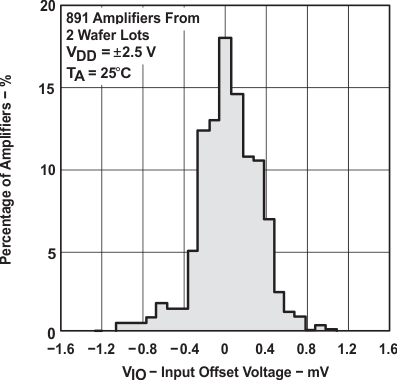 Figure 1. Distribution of TLC2272 Input Offset Voltage
Figure 1. Distribution of TLC2272 Input Offset Voltage
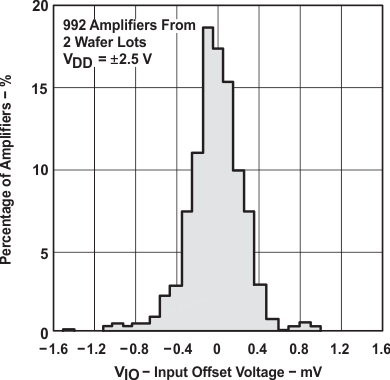 Figure 3. Distribution of TLC2274 Input Offset Voltage
Figure 3. Distribution of TLC2274 Input Offset Voltage
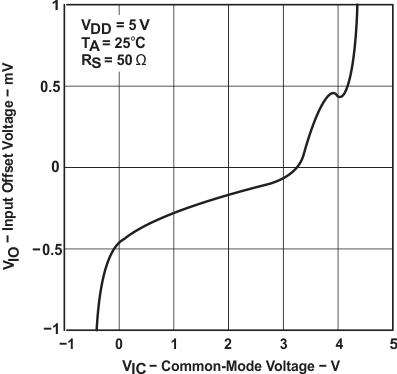 Figure 5. Input Offset Voltage vs Common-Mode Voltage
Figure 5. Input Offset Voltage vs Common-Mode Voltage
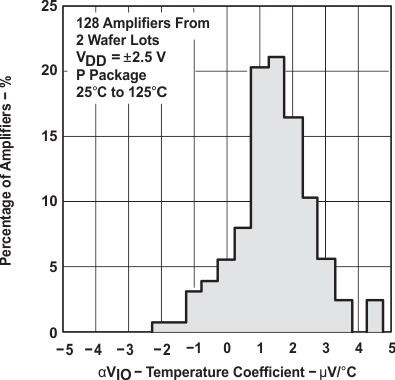 Figure 7. Distribution of TLC2272 vs
Figure 7. Distribution of TLC2272 vs Input Offset Voltage Temperature Coefficient
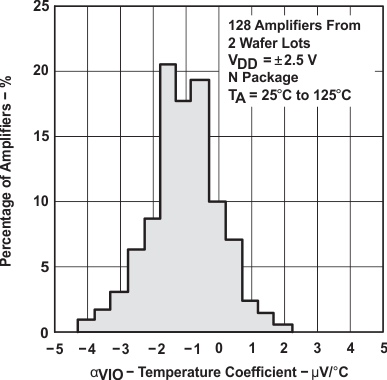 Figure 9. Distribution of TLC2274 vs
Figure 9. Distribution of TLC2274 vs Input Offset Voltage Temperature Coefficient
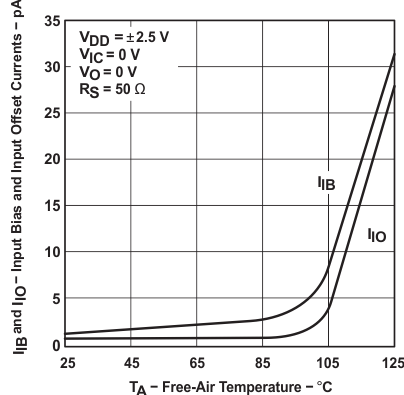 Figure 11. Input Bias and Input Offset Current vs
Figure 11. Input Bias and Input Offset Current vs Free-Air Temperature
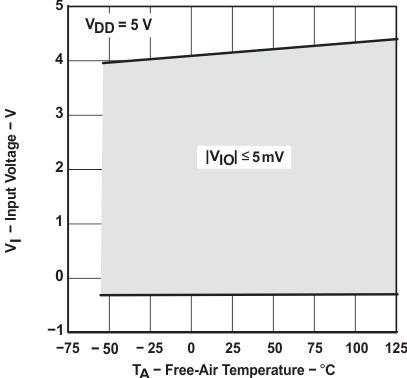 Figure 13. Input Voltage vs Free-Air Temperature
Figure 13. Input Voltage vs Free-Air Temperature
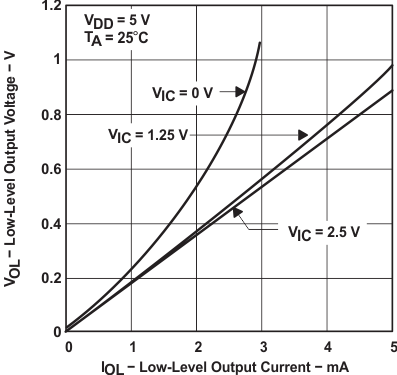 Figure 15. Low-Level Output Voltage vs
Figure 15. Low-Level Output Voltage vs Low-Level Output Current
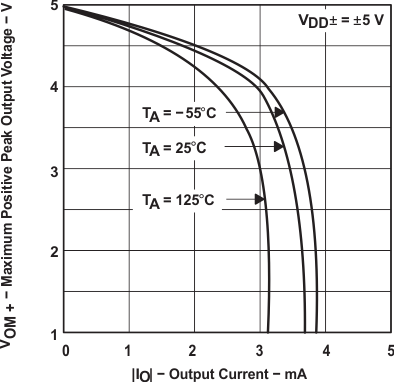 Figure 17. Maximum Positive Peak Output Voltage vs
Figure 17. Maximum Positive Peak Output Voltage vs Output Current
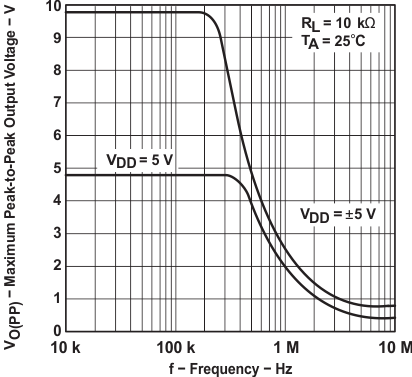 Figure 19. Maximum Peak-to-Peak Output Voltage vs
Figure 19. Maximum Peak-to-Peak Output Voltage vs Frequency
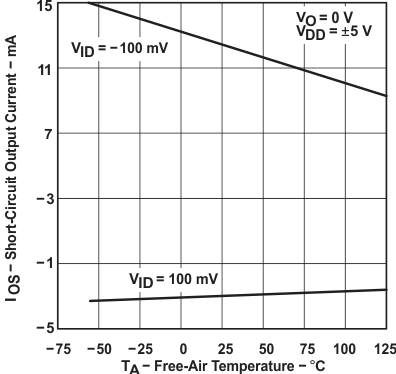 Figure 21. Short-Circuit Output Current vs
Figure 21. Short-Circuit Output Current vs Free-Air Temperature
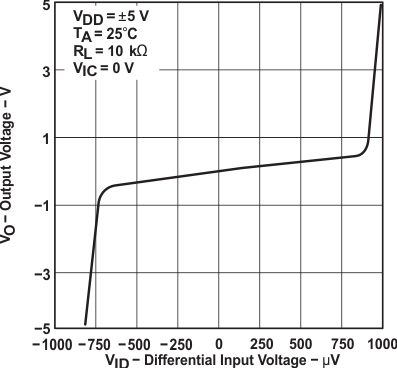 Figure 23. Output Voltage vs Differential Input Voltage
Figure 23. Output Voltage vs Differential Input Voltage
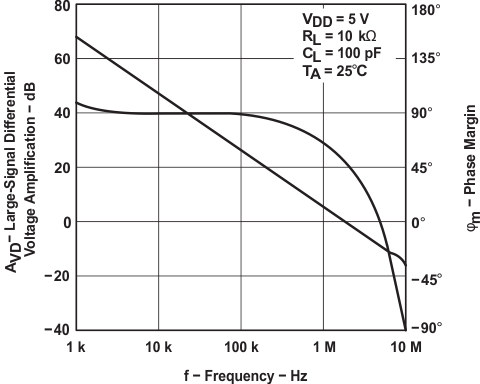 Figure 25. Large-Signal Differential Voltage Amplification and Phase Margin vs Frequency
Figure 25. Large-Signal Differential Voltage Amplification and Phase Margin vs Frequency
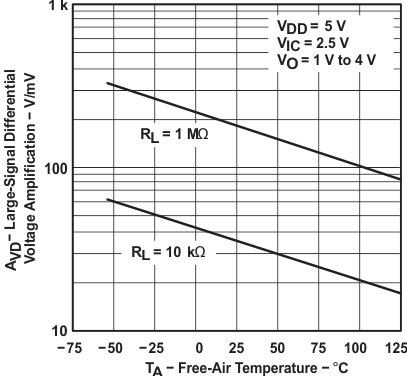 Figure 27. Large-Signal Differential Voltage Amplification vs Free-Air Temperature
Figure 27. Large-Signal Differential Voltage Amplification vs Free-Air Temperature
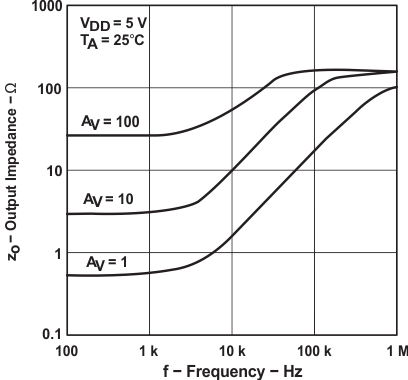 Figure 29. Output Impedance vs Frequency
Figure 29. Output Impedance vs Frequency
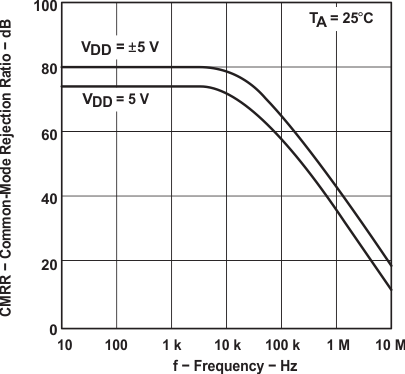 Figure 31. Common-Mode Rejection Ratio vs Frequency
Figure 31. Common-Mode Rejection Ratio vs Frequency
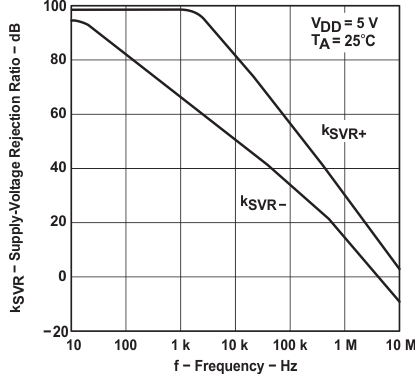 Figure 33. Supply-Voltage Rejection Ratio vs Frequency
Figure 33. Supply-Voltage Rejection Ratio vs Frequency
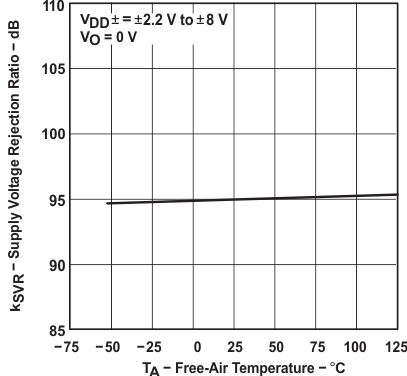 Figure 35. Supply-Voltage Rejection Ratio vs
Figure 35. Supply-Voltage Rejection Ratio vs Free-Air Temperature
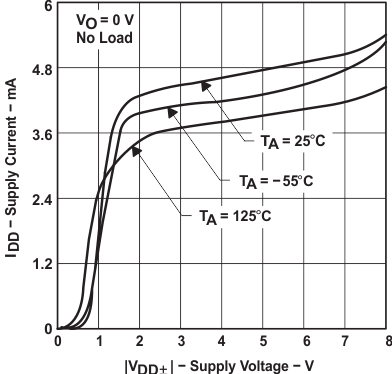 Figure 37. TLC2274 Supply Current vs Supply Voltage
Figure 37. TLC2274 Supply Current vs Supply Voltage
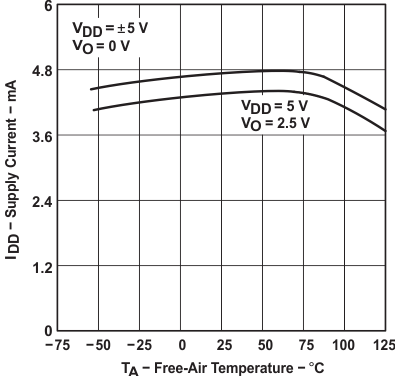 Figure 39. TLC2274 Supply Current vs Free-Air Temperature
Figure 39. TLC2274 Supply Current vs Free-Air Temperature
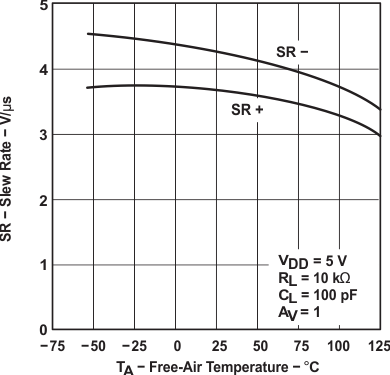 Figure 41. Slew Rate vs Free-Air Temperature
Figure 41. Slew Rate vs Free-Air Temperature
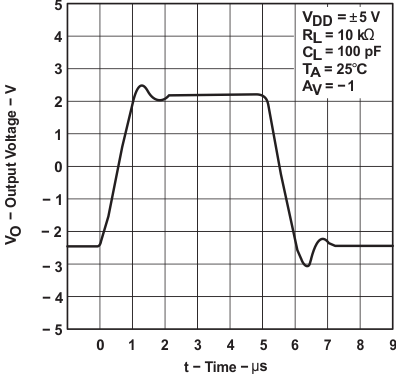 Figure 43. Inverting Large-Signal Pulse Response
Figure 43. Inverting Large-Signal Pulse Response
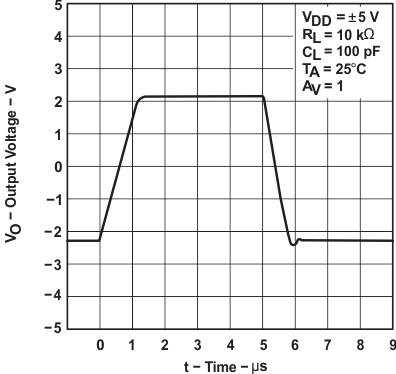 Figure 45. Voltage-Follower Large-Signal Pulse Response
Figure 45. Voltage-Follower Large-Signal Pulse Response
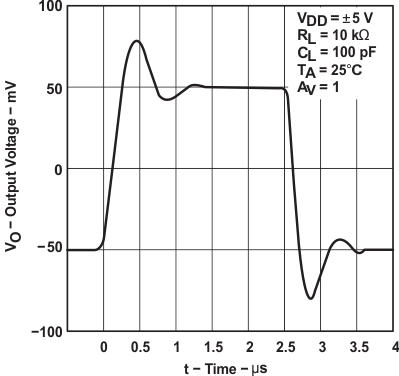 Figure 47. Inverting Small-Signal Pulse Response
Figure 47. Inverting Small-Signal Pulse Response
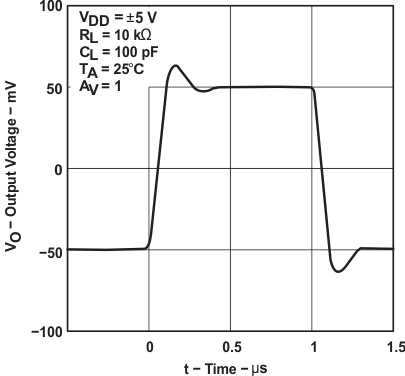 Figure 49. Voltage-Follower Small-Signal Pulse Response
Figure 49. Voltage-Follower Small-Signal Pulse Response
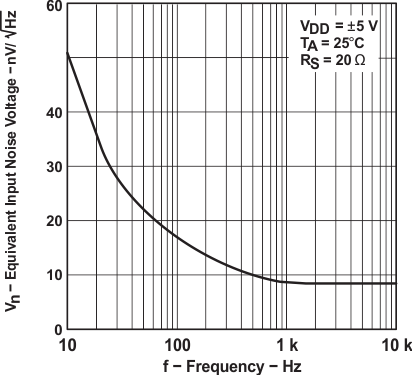 Figure 51. Equivalent Input Noise Voltage vs Frequency
Figure 51. Equivalent Input Noise Voltage vs Frequency
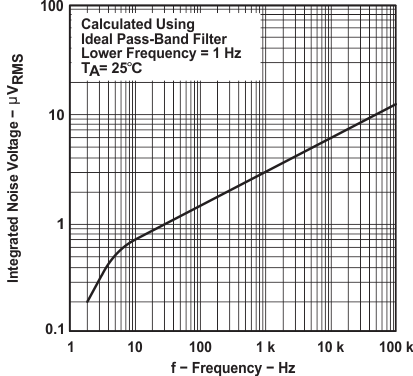 Figure 53. Integrated Noise Voltage vs Frequency
Figure 53. Integrated Noise Voltage vs Frequency
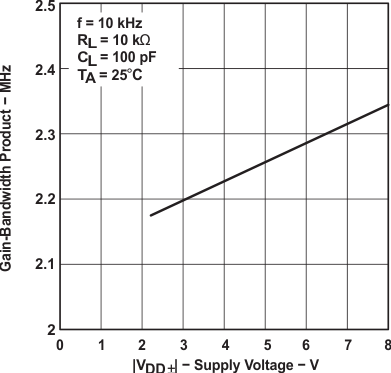 Figure 55. Gain-Bandwidth Product vs Supply Voltage
Figure 55. Gain-Bandwidth Product vs Supply Voltage
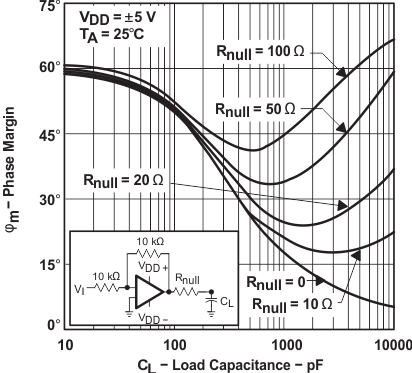 Figure 57. Phase Margin vs Load Capacitance
Figure 57. Phase Margin vs Load Capacitance
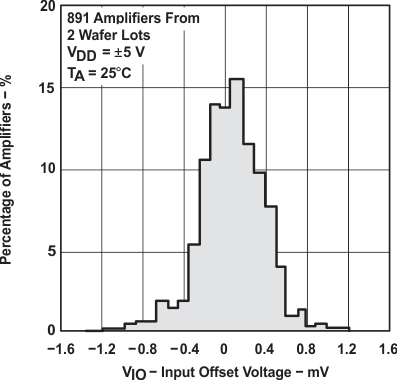 Figure 2. Distribution of TLC2272 Input Offset Voltage
Figure 2. Distribution of TLC2272 Input Offset Voltage
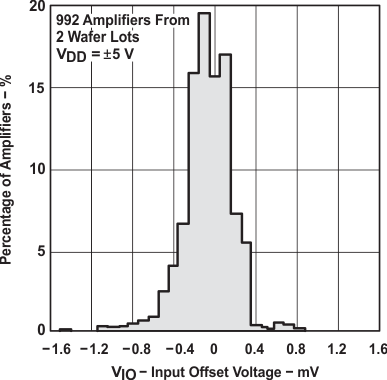 Figure 4. Distribution of TLC2274 Input Offset Voltage
Figure 4. Distribution of TLC2274 Input Offset Voltage
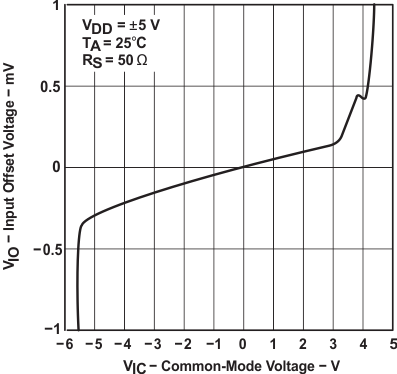 Figure 6. Input Offset Voltage vs Common-Mode Voltage
Figure 6. Input Offset Voltage vs Common-Mode Voltage
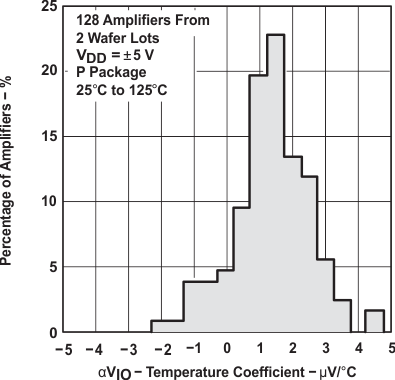 Figure 8. Distribution of TLC2272 vs
Figure 8. Distribution of TLC2272 vs Input Offset Voltage Temperature Coefficient
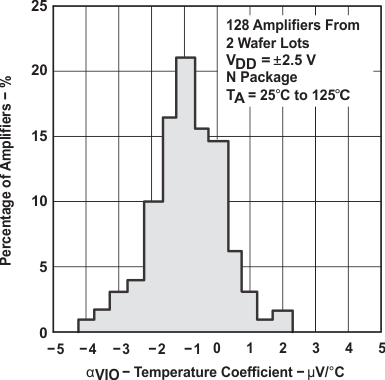 Figure 10. Distribution of TLC2274 vs
Figure 10. Distribution of TLC2274 vs Input Offset Voltage Temperature Coefficient
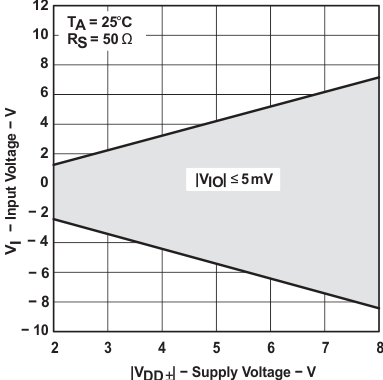 Figure 12. Input Voltage vs Supply Voltage
Figure 12. Input Voltage vs Supply Voltage
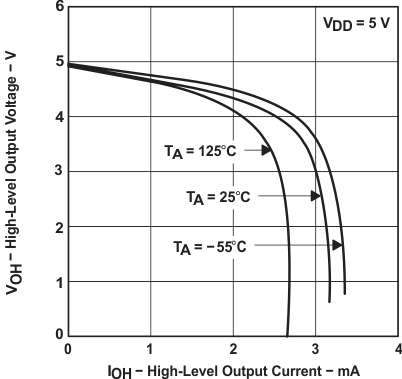 Figure 14. High-Level Output Voltage vs
Figure 14. High-Level Output Voltage vs High-Level Output Current
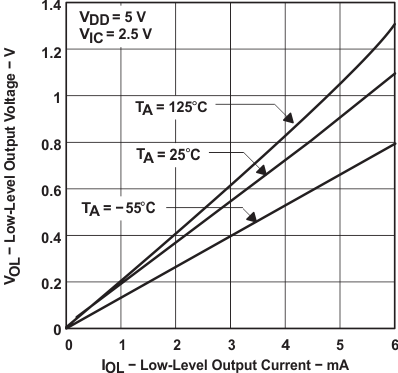 Figure 16. Low-Level Output Voltage vs
Figure 16. Low-Level Output Voltage vs Low-Level Output Current
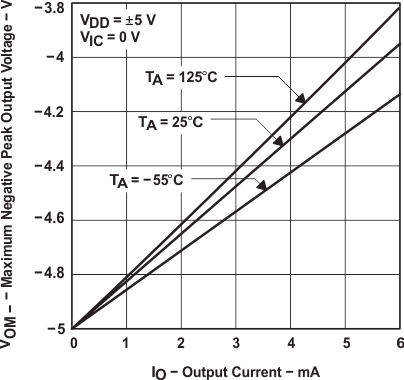 Figure 18. Maximum Positive Peak Output Voltage vs
Figure 18. Maximum Positive Peak Output Voltage vs Output Current
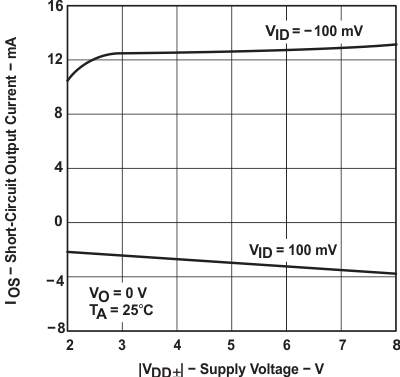 Figure 20. Short-Circuit Output Current vs Supply Voltage
Figure 20. Short-Circuit Output Current vs Supply Voltage
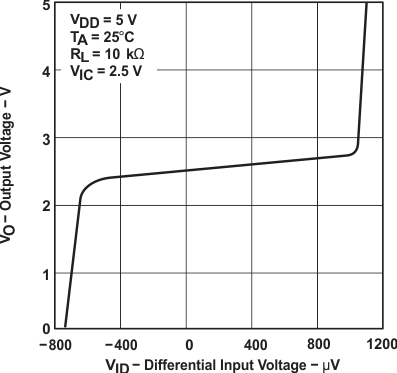 Figure 22. Output Voltage vs Differential Input Voltage
Figure 22. Output Voltage vs Differential Input Voltage
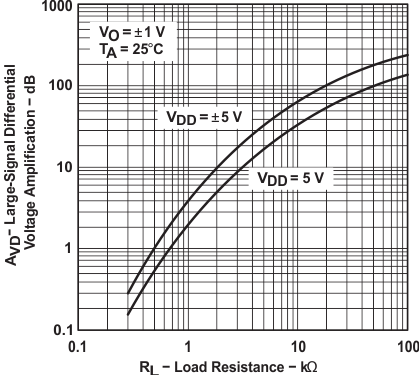 Figure 24. Large-Signal Differential Voltage Amplification vs
Figure 24. Large-Signal Differential Voltage Amplification vs Load Resistance
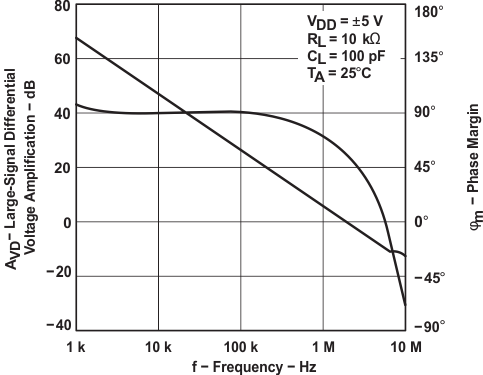 Figure 26. Large-Signal Differential Voltage Amplification and Phase Margin vs Frequency
Figure 26. Large-Signal Differential Voltage Amplification and Phase Margin vs Frequency
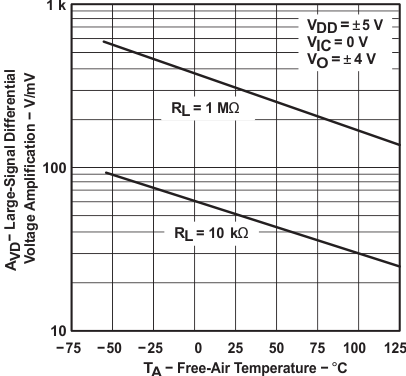 Figure 28. Large-Signal Differential Voltage Amplification vs Free-Air Temperature
Figure 28. Large-Signal Differential Voltage Amplification vs Free-Air Temperature
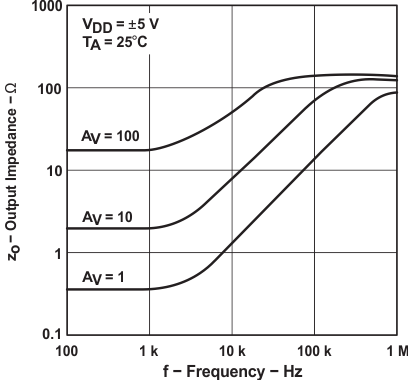 Figure 30. Output Impedance vs Frequency
Figure 30. Output Impedance vs Frequency
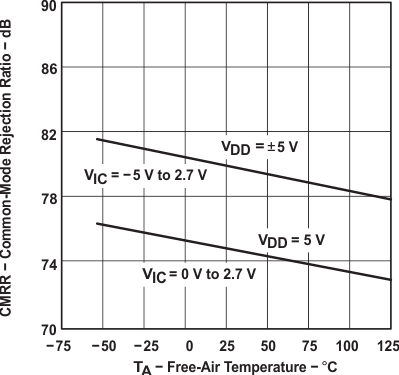 Figure 32. Common-Mode Rejection Ratio vs
Figure 32. Common-Mode Rejection Ratio vs Free-Air Temperature
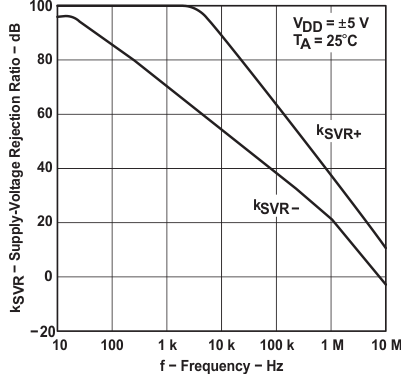 Figure 34. Supply-Voltage Rejection Ratio vs Frequency
Figure 34. Supply-Voltage Rejection Ratio vs Frequency
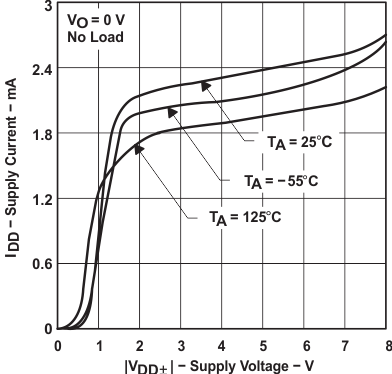 Figure 36. TLC2272 Supply Current vs Supply Voltage
Figure 36. TLC2272 Supply Current vs Supply Voltage
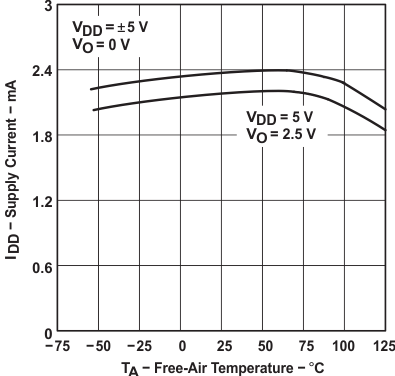 Figure 38. TLC2272 Supply Current vs Free-Air Temperature
Figure 38. TLC2272 Supply Current vs Free-Air Temperature
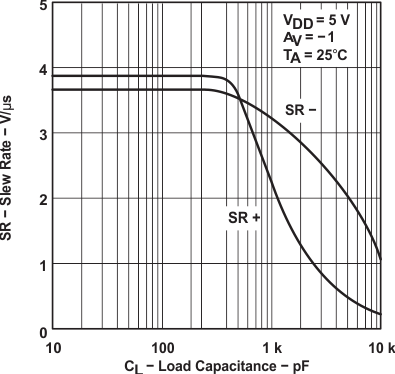 Figure 40. Slew Rate vs Load Capacitance
Figure 40. Slew Rate vs Load Capacitance
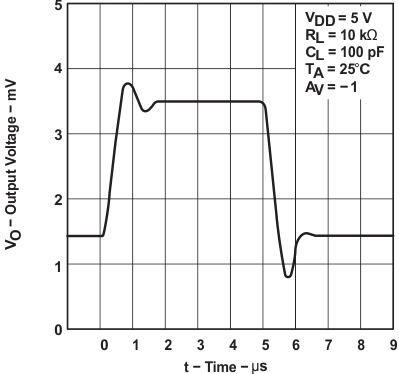 Figure 42. Inverting Large-Signal Pulse Response
Figure 42. Inverting Large-Signal Pulse Response
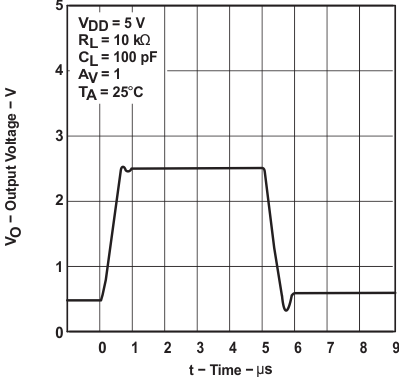 Figure 44. Voltage-Follower Large-Signal Pulse Response
Figure 44. Voltage-Follower Large-Signal Pulse Response
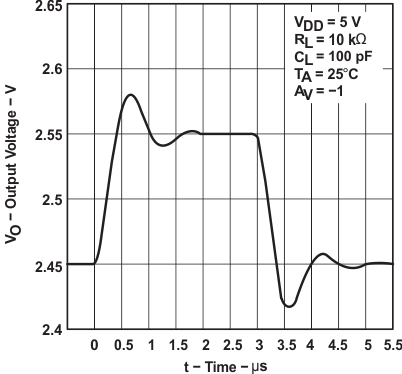 Figure 46. Inverting Small-Signal Pulse Response
Figure 46. Inverting Small-Signal Pulse Response
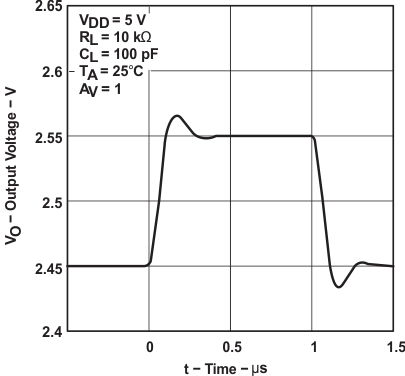 Figure 48. Voltage-Follower Small-Signal Pulse Response
Figure 48. Voltage-Follower Small-Signal Pulse Response
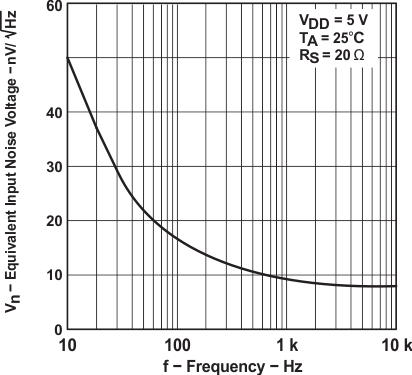 Figure 50. Equivalent Input Noise Voltage vs Frequency
Figure 50. Equivalent Input Noise Voltage vs Frequency
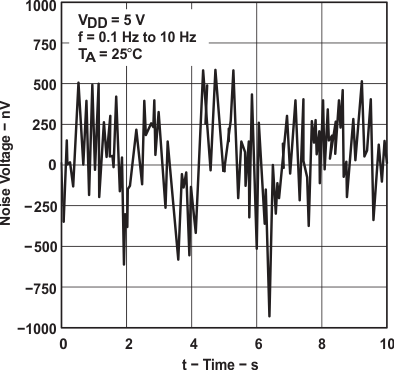 Figure 52. Noise Voltage Over a 10 Second Period
Figure 52. Noise Voltage Over a 10 Second Period
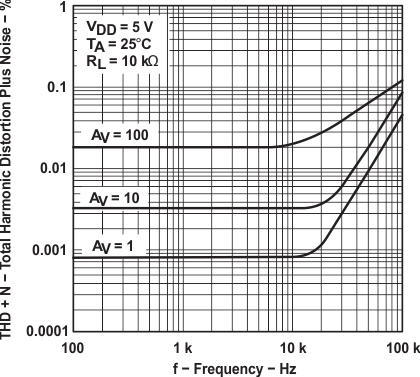 Figure 54. Total Harmonic Distortion + Noise vs Frequency
Figure 54. Total Harmonic Distortion + Noise vs Frequency
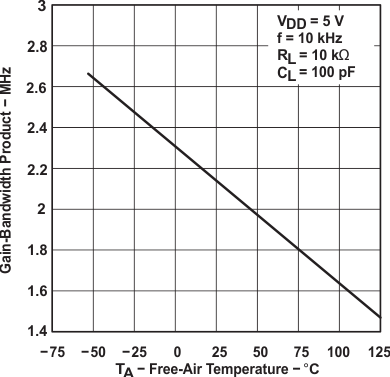 Figure 56. Gain-Bandwidth Product vs Free-Air Temperature
Figure 56. Gain-Bandwidth Product vs Free-Air Temperature
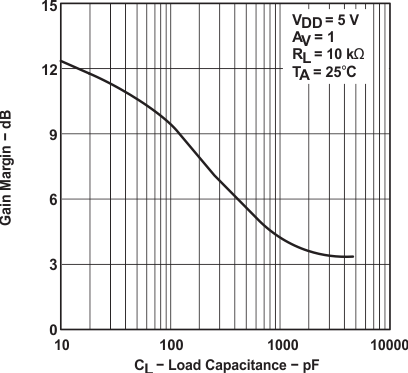 Figure 58. Gain Margin vs Load Capacitance
Figure 58. Gain Margin vs Load Capacitance